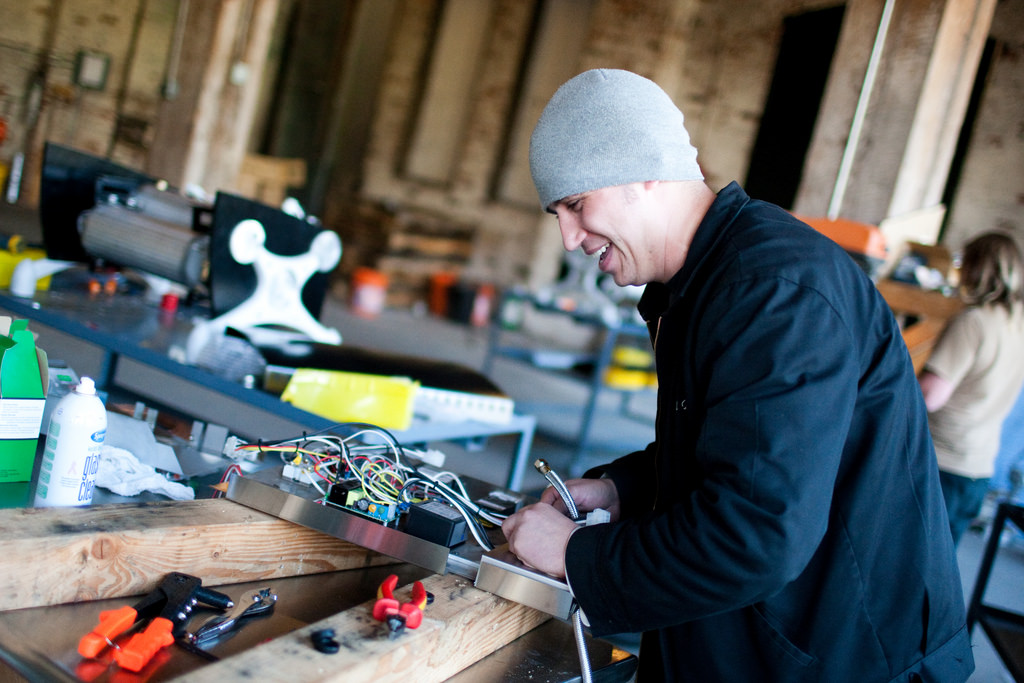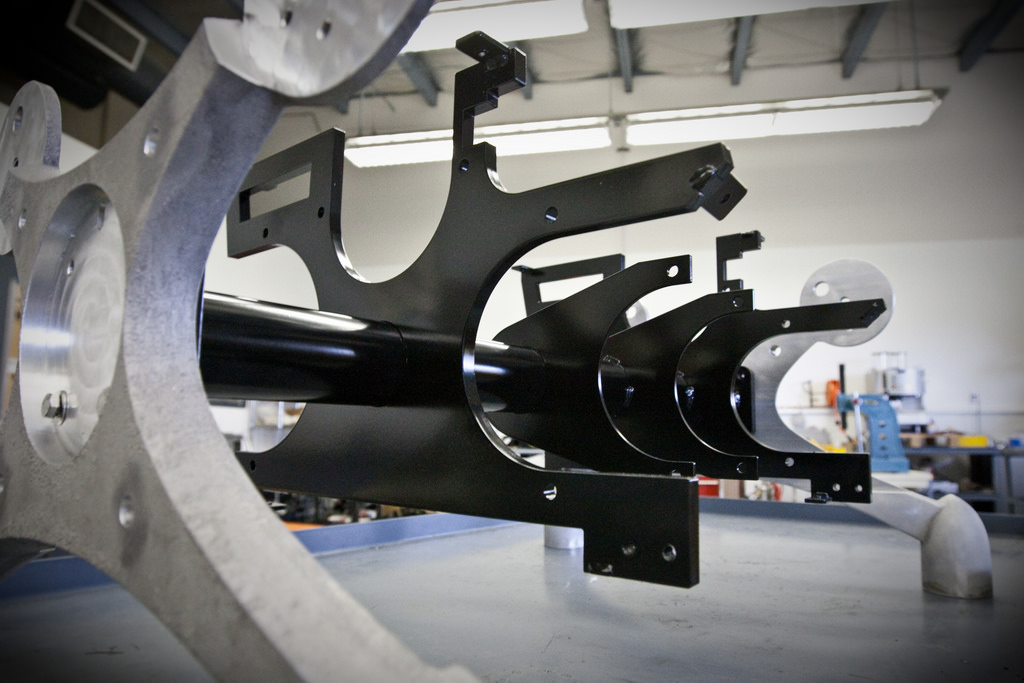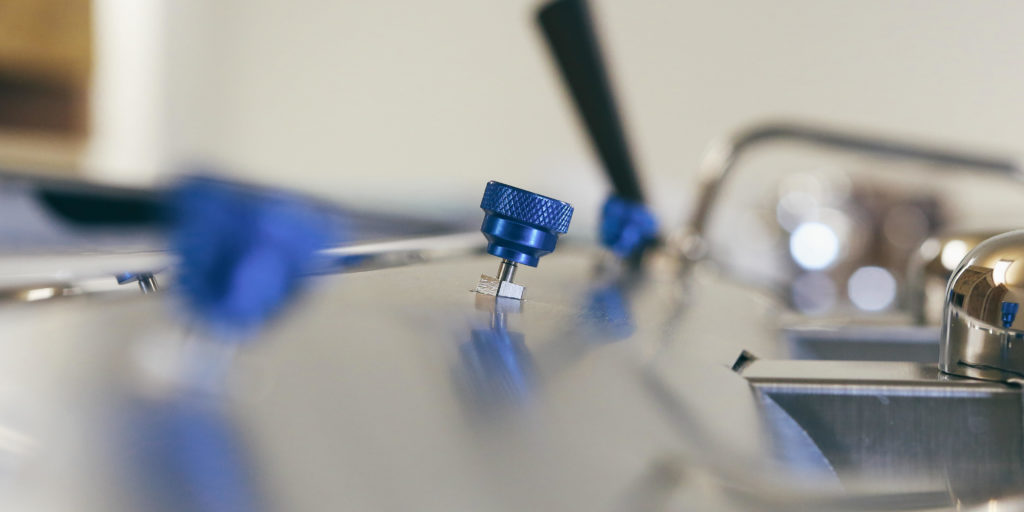The State of Slayer, Part 3: Rooted in Technology
Chris
Jun 06, 2016
This is part 3 in our blog series, The State of Slayer. Learn about the origins of our company and the impetus for our radical products in Part 1: Provoking Innovation.
From the start, Slayer has been on a journey to make coffee better™. It’s our mission, our mantra, our meaning for existence. We’re a company defined by a laser-like focus on the advance of specialty coffee, and we’ll be damned if our machines don’t make a difference.
Jason’s founding vision was to put a new tool into the hands of baristas everywhere, to create a technology that matters, and to change coffee for good. In general terms, he knew what he wanted. Better espresso. Drier steam. Easier maintenance. The list goes on. As part of our core team for the last 9 years, we’ve had a secret weapon to help us bring these ideas to life.
His name is Devin Walker.

The Slayer “project”, as it was known in 2007, was hardly 6 months off the ground when Devin joined us. Our ideas were still swirling around, our drawings were barely coming together, and we were just starting to build a proof of concept. With a tight crew of 4, everyone deep into research and design, we needed an extra set of hands to actually manufacture the first Slayer parts and prototypes. So we visited a small, Seattle machine shop to ask the owner if he’d recommend anyone for a new project. He pointed to Devin and we got to work.
The early days were hot and heavy. Jason would burst through the doors and unload a pile of hand-drawn sketches, asking, “Can you build this?” Devin’s background was in aerospace, not espresso, so everything was new. But as a skilled machinist, from a long line of machinists, smart manufacturing was second-nature. He was all in.
As Jason collaborated with our designers and engineers – plus his espresso-savvy brothers, back in Calgary – and churned out ideas, Devin was building them into a breathtaking reality. His hands were on every piece. Tubing was hand-bent and electronics were hand-wired. The Xs on our prototypes weren’t sand-cast, as they are today, but machined and welded. Fitting up body panels for perfect alignment would take up to 8 hours for one machine.

Along the way, Devin maintained documentation in SOLIDWORKS, creating the models that would eventually guide production. Slayer was finally starting to take shape and the team narrowed in on their proof of concept. We were set on developing an extraction method that would dispense water slowly at variable flow settings, yet with consistent results. With this method, we would show the world a new style of extraction with coffee that was ground more fine than anyone thought possible. Flow rate control would allow for complete customization of the brew profile, tailored to each coffee and each palate. By designing an easily repeatable process, superb results could be achieved by anyone, anywhere.
The needle valve was our solution. It was tested with an off-the-shelf part, spun on to a solenoid, appallingly complex and cumbersome. But with this technology on a frankenstein machine, we tasted our first Slayer shot. The excitement was uncontainable.
Our concept was proved and we put Devin to work on a pair of pre-production machines. Soon after, in April 2009, those same machines traveled to Atlanta for our launch at the SCAA Expo, where we finally showed Slayer to the world.
That’s when Devin really took the plunge. Devin is a family man, married with young kids. He gardens fruits and vegetables, smokes meat, and brews beer at home. He’s the kind of guy who is keenly aware of the risks involved in leaving a steady job to join a start-up. Yet that’s exactly what he did, right after SCAA, when he saw the momentum at Slayer and turned this “side project” into a full-time gig. Since then, he has continued to prove himself to be a vital part of our growth.
As production began and orders were fulfilled, Devin’s role grew to include customer service and troubleshooting. He was among those who knew Slayer best; who else could offer such well-informed support?
In those early years, Slayer Versions 1 and 2 made stern demands – especially the mechanical valve grouphead – but we blew past every barrier with smart technology. Committed to improving the machine that we loved, we formed a Research and Development team, with Devin as Lead Mechanic.
The Single Group and Version 3 projects of 2013 converged on one crucial issue: reliability. Scrutinizing their work, Jason and Devin contemplated the improvements that could be made for the new models. In a magical, “Ah ha!” moment (as Devin calls it), they envisaged their solution, and Slayer’s first electronic valve grouphead was developed. Slayer, the modern manual machine, had become ultimately reliable.

What other defining features are marked with Devin’s fingerprints? Just about all of them. With his help, Slayer has sustained a commitment to constant improvement over the years. Clever innovations, subtle but significant, make our technology stand out.
Jason’s ideas are big, but when it comes to making them a reality, we have the right man for the job. Devin, Lead Mechanic for Research and Development, has been helping Slayer make coffee better for 9 years and counting. Later this week, look for news about his best work yet.
Want to know more?
Get into the mind of Slayer’s Industrial Designer in part 4, coming soon.
SLAYER Corporate Headquarters
PHONE: +1 206.284.7171
707 Lind Ave SW, Renton, WA 98057